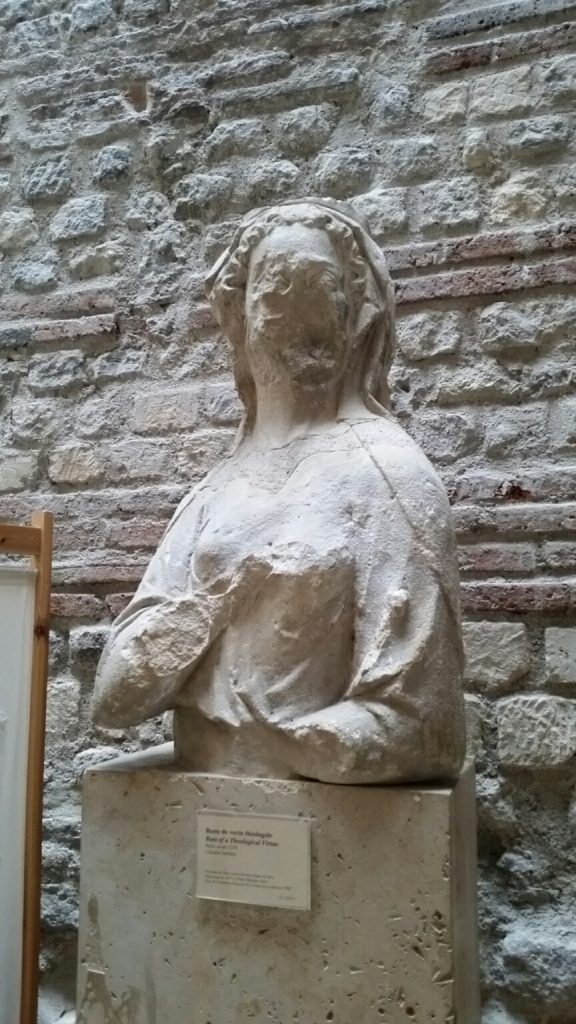Following a series of scientific and academic investigations, this medieval stone Head of a Virtue in the Nasher’s collection has been identified as belonging to one of three theological virtues from Notre Dame Cathedral in Paris, and dates to about 1245. Scholars have suggested that the Virtues stood on the right side of the north transept portal. The Virgin Mary still stands on the trumeau (or pillar between the doors) and the three wise men would have stood on the left side. The weathered surface of the sculpture supports the idea of its positioning outdoors.
When this head arrived at Duke University in 1966, its identity was unknown. Samples of the head’s limestone were examined to determine the quarry from which the stone came. Using neutron activation analysis, the sample was compared with those from known locations. Twenty-five works from Notre Dame Cathedral dating from the 12th-13th centuries have been sampled and analyzed. One of these, a head now housed at the Musée du Moyen Age in Paris, is very similar to the Nasher Virtue and very likely also portrays one of the three original Virtues from Notre Dame.
Countless other sculptures from religious buildings were torn down and decapitated during the French Revolution between 1789 – 1799 as French citizens rebelled against the power of the aristocracy and Catholic Church. Much of the weathering of the face may have occurred in the years following the revolution when the head was left exposed to the elements.
- French, Head of a Virtue, 1245. Limestone, 13 x 12 1/4 x 9 1/2 inches. The Nasher Museum of Art, Durham, NC. The Brummer Collection, 1966.179.1
- Notre Dame Cathedral, Paris, France, Image from Google Earth
- Front Facade, Notre Dame Cathedral, Image from Google Earth
- North Transept Portal, Notre Dame Cathedral, Image from Google Earth
- North Transept Portal, Notre Dame Cathedral, Image from Google Earth
- Stone Analysis, Limestone Sculpture Provenance Project
- Virtue from Musée du Moyen Age in Paris, Image from Set in Stone by Charles Little
- Bust of a Theological Virtue from Notre Dame, displayed in the Musée de Cluny. Image taken by Marianne Wardle, 2016.
- Jacques Bertaux. Storming of the Tuileries Palace on August 10, 1792, 1793. Oil on canvas, 124 x 192 cm. Musée de l’Histoire de France, Chateau de Versailles. MV 5182








